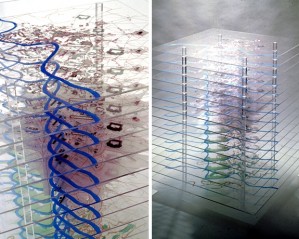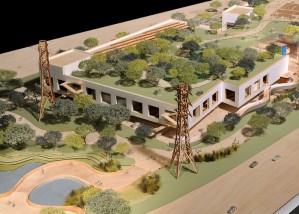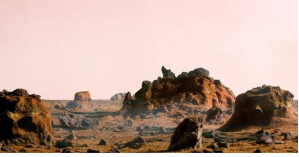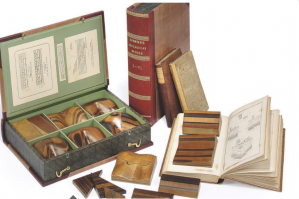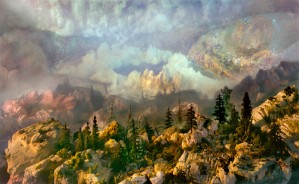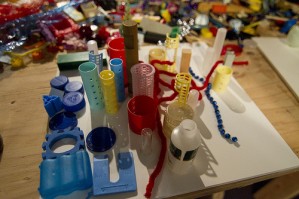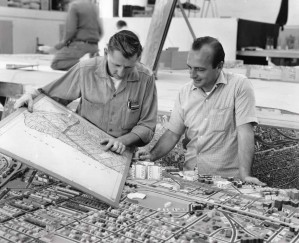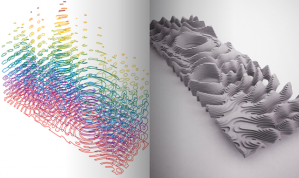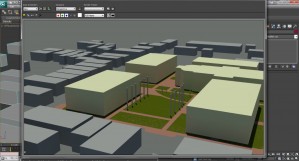-
Models with Depth
After winning the Rome Prize in 1999, Tom Leader’s chosen project was to create a temporal map of Rome. Relating time and historical data in the form of a drawing is a challenge enough, but expression in the form of a physical model is even more so. Tom Leader’s finished project relies on 15 acrylic […]
-
Let’s Get Physical: A Gehry Partners Approach to Physical Architecture Modelling
The design process at Gehry Partners is deeply rooted in physical model-making. Frank Gehry, a well known American architect, established his practice in 1962 in Los Angeles, California. In 2001 Gehry Partners was formed, and today has a staff of over 140 people. During the design process at Gehry Partners many models are made, in […]
-
Little landscapes for the BIG screen
We often go to the movies to escape our reality. Conversely, many filmmakers try to make a ‘recognizable reality’[i]. There are more than a few takeaways from the modeling techniques of the film industry, and many that could be compelling entries in the designer’s playbook. 1. Choose materials with purpose. It is advised that […]
-
Strange Worlds
At first glance, images of surreal landscapes by artist Matthew Albanese appear so unbelievably real that it is impossible to imagine that they are in fact photographs of dioramas. Through his series ‘Strange Worlds’, the artist demonstrates that it is possible to create something extraordinary out of very ordinary everyday materials. Using a wide range […]
-
Geological Modeling Throwback
Thomas Sopwith, a civil engineer and surveyor from the 19th century fabricated three-dimensional teaching models to represent the earth strata. The smooth, wooden models were pocket-sized, approximately 4”X 4” X 2”. Various tree species were used to capture the thicknesses of layering rock and mineral strata as well as the fractures occurring within layers. Each […]
-
Shrink It: Landscape Representation Techniques
Architecture models play a helpful role in communicating and expressing the designer’s vision, intentions, and implications. But outside of this profession, landscape modeling can be expressed very differently. I explored several artists’ takes of modeling or recreating the landscape at a miniature scale. Kim Keever creates miniature staged landscapes inside a 200-gallon fish tank (. […]
-
Place It! Planning as Play
“The idea is simple: everyone is a planner. Everyone has a relationship to the city, and uses it in certain ways. It’s our job to get people’s ideas to the surface” What is the vision for our city? Taking notes from the Los Angeles artists, James Rojas has found a way to convey abstract planning […]
-
NYC Panorama at the Queens Museum of Art
Unbeknownst to most visitors of New York City, the Queens Museum of Art holds the massive NYC Panorama. The attraction was commissioned by master builder and urban planner Robert Moses for display at the 1964 World’s Fair as a powerful representational tool and as a spectacle. The 1” = 100’ scale of the project […]
-
Organic Terrain Design
There is a wide-ranging difference in perceptions of terrain. Depending on education, experience and field of expertise the terrain can be an inspiring creative outlet. British artist Kane Cali has always used terrain to broaden his approach to art. Using some techniques that are similar to landscape architects and some that are not, he transforms […]
-
Procedures for modeling from an AutoCAD file in 3DS Max
Procedures for modeling from an AutoCAD file in 3DS Max: Make preliminary decisions about what you are wanting to model in the scene. This can be buildings, planters, paving, grass, water, etc. It’s important that you have an idea of where you want your perspective view so you can be intentional in making these decisions […]

